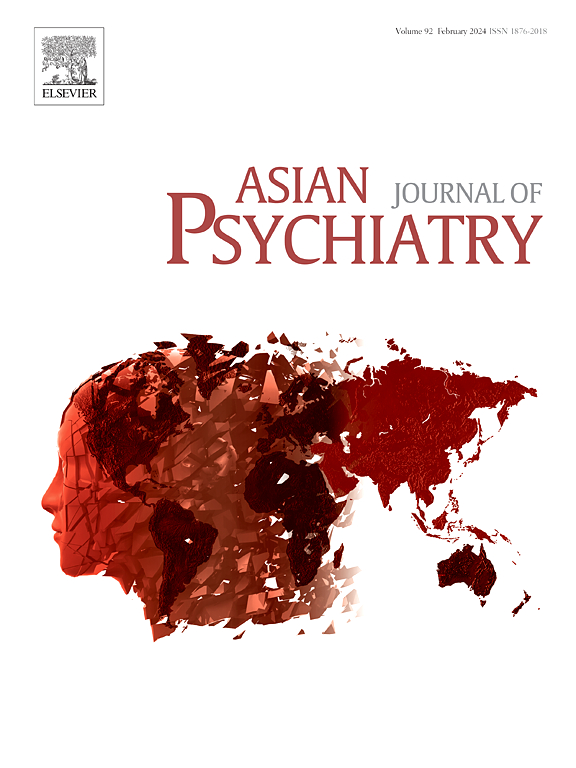Sadness-specific speech-in-noise impairments and subregional left insular volume reduction in schizophrenia with auditory verbal hallucinations
IF 4.5
4区 医学
Q1 PSYCHIATRY
引用次数: 0
Abstract
This study investigated the association between regional volumes of the left insula, emotional speech-in-noise recognition (ESR), and auditory verbal hallucinations (AVHs) in individuals with schizophrenia. Fifty‑eight patients were categorized into two groups according to the PANSS P3 score: AVHs (n = 19) and non‑AVHs (n = 39). All participants completed ESR tasks and underwent structural MRI for volumetric analysis. Compared to the non-AVH group, patients with AVHs exhibited impaired ESR of sadness and reduced gray matter volumes in five left insular subregions. However, group differences in ESR performance became non-significant after controlling for PANSS cognitive symptoms, and volumetric differences were attenuated after adjusting for sex, negative symptoms, and cognitive symptoms. Following normalization to total intracranial volume, patients with AVHs still exhibited smaller volumes in the left insula, specifically in two subregions of the left ventral and dorsal agranular insula. Moreover, volumes in the dorsal agranular and dysgranular insula were significantly correlated with both AVH severity and ESR performance. These findings suggest that structural abnormalities in specific left insular subregions may underlie to emotional speech processing deficits in schizophrenia, highlighting potential neuroanatomical biomarkers and intervention targets in patients with AVHs. Given that AVH grouping was based on current symptoms (past week) rather than lifetime history, this limitation should be considered in future studies when interpreting the present findings.
伴有言语幻听的精神分裂症患者的悲伤特异性噪音言语障碍和分区域左岛体积减少。
本研究探讨了精神分裂症患者左脑岛区域体积、情绪语音噪声识别(ESR)和言语幻听(AVHs)之间的关系。58例患者根据PANSS P3评分分为两组:AVHs (n = 19)和非AVHs (n = 39)。所有参与者都完成了ESR任务,并接受了结构MRI进行体积分析。与非avh组相比,avh患者表现出悲伤的ESR受损,五个左岛亚区灰质体积减少。然而,在控制PANSS认知症状后,各组ESR表现的差异变得不显著,在调整性别、阴性症状和认知症状后,体积差异减弱。在归一化到总颅内容量后,AVHs患者的左脑岛体积仍然较小,特别是在左颗粒岛腹侧和背侧的两个亚区。此外,背侧颗粒岛和非颗粒岛的体积与AVH严重程度和ESR表现显著相关。这些发现表明,特定左岛亚区结构异常可能是精神分裂症患者情绪言语处理缺陷的基础,突出了AVHs患者潜在的神经解剖学生物标志物和干预靶点。鉴于AVH分组是基于当前症状(过去一周)而不是终生病史,在未来的研究中解释本研究结果时应考虑到这一局限性。
本文章由计算机程序翻译,如有差异,请以英文原文为准。
求助全文
约1分钟内获得全文
求助全文
来源期刊

Asian journal of psychiatry
Medicine-Psychiatry and Mental Health
CiteScore
12.70
自引率
5.30%
发文量
297
审稿时长
35 days
期刊介绍:
The Asian Journal of Psychiatry serves as a comprehensive resource for psychiatrists, mental health clinicians, neurologists, physicians, mental health students, and policymakers. Its goal is to facilitate the exchange of research findings and clinical practices between Asia and the global community. The journal focuses on psychiatric research relevant to Asia, covering preclinical, clinical, service system, and policy development topics. It also highlights the socio-cultural diversity of the region in relation to mental health.
 求助内容:
求助内容: 应助结果提醒方式:
应助结果提醒方式:


